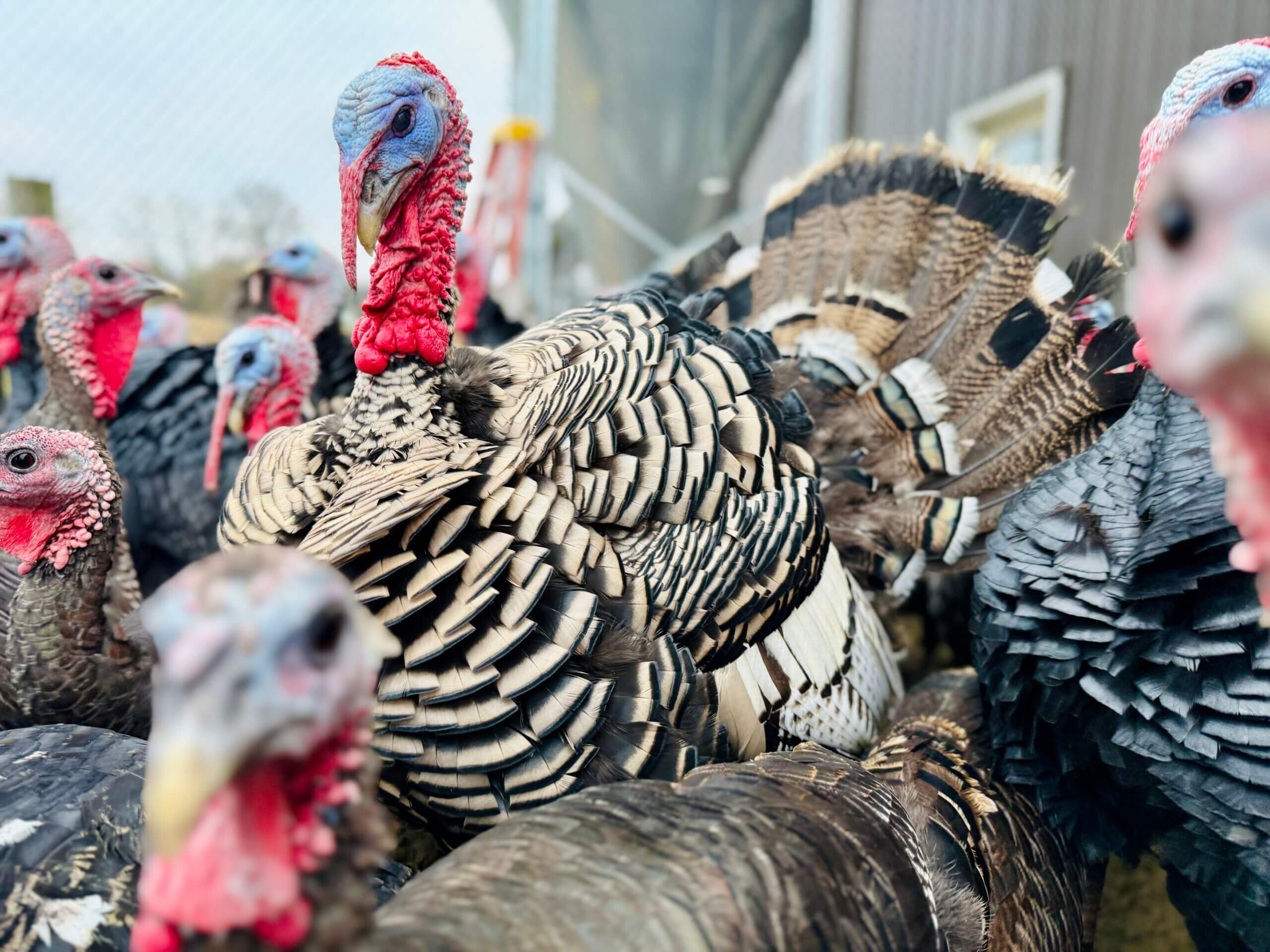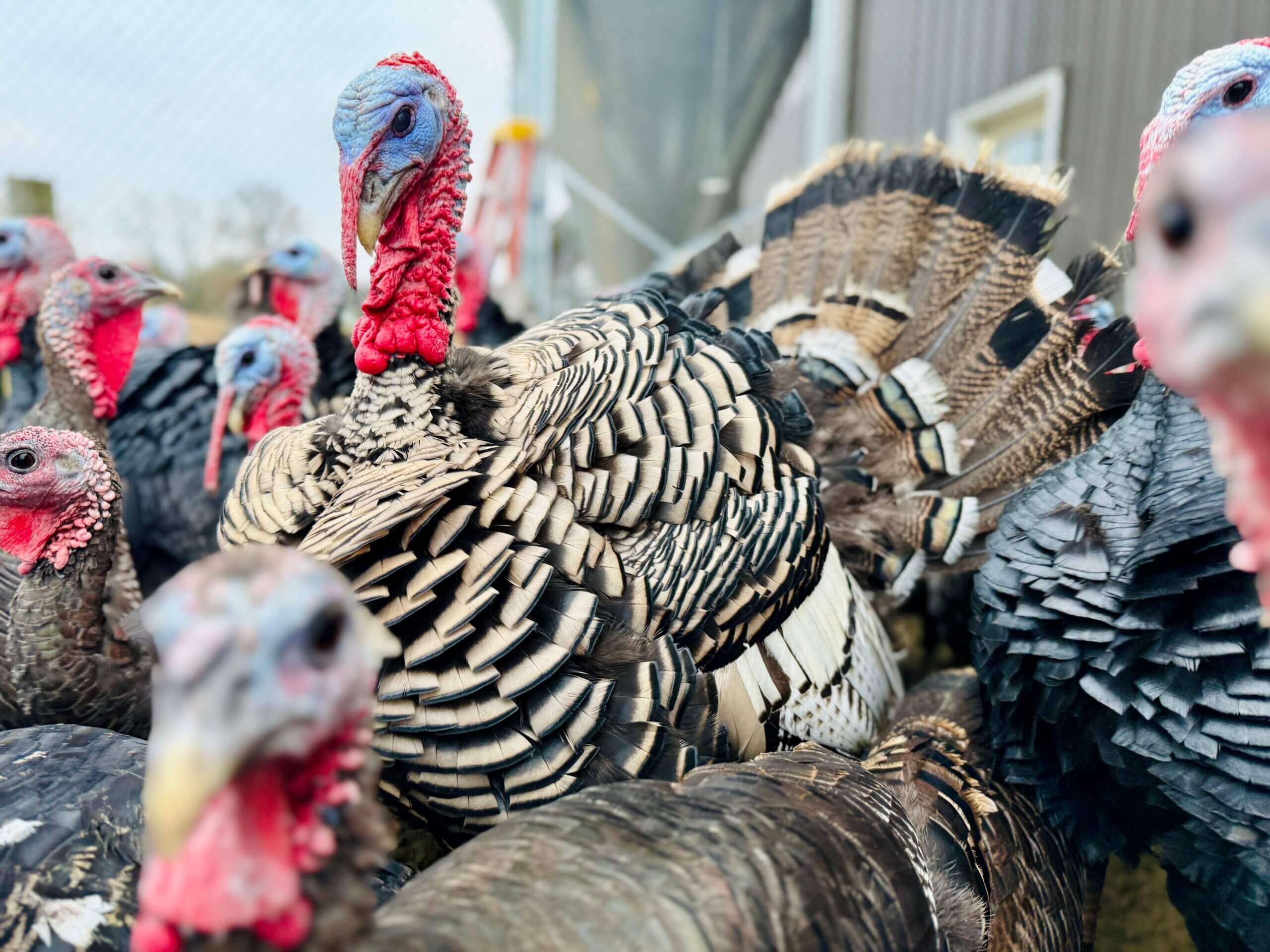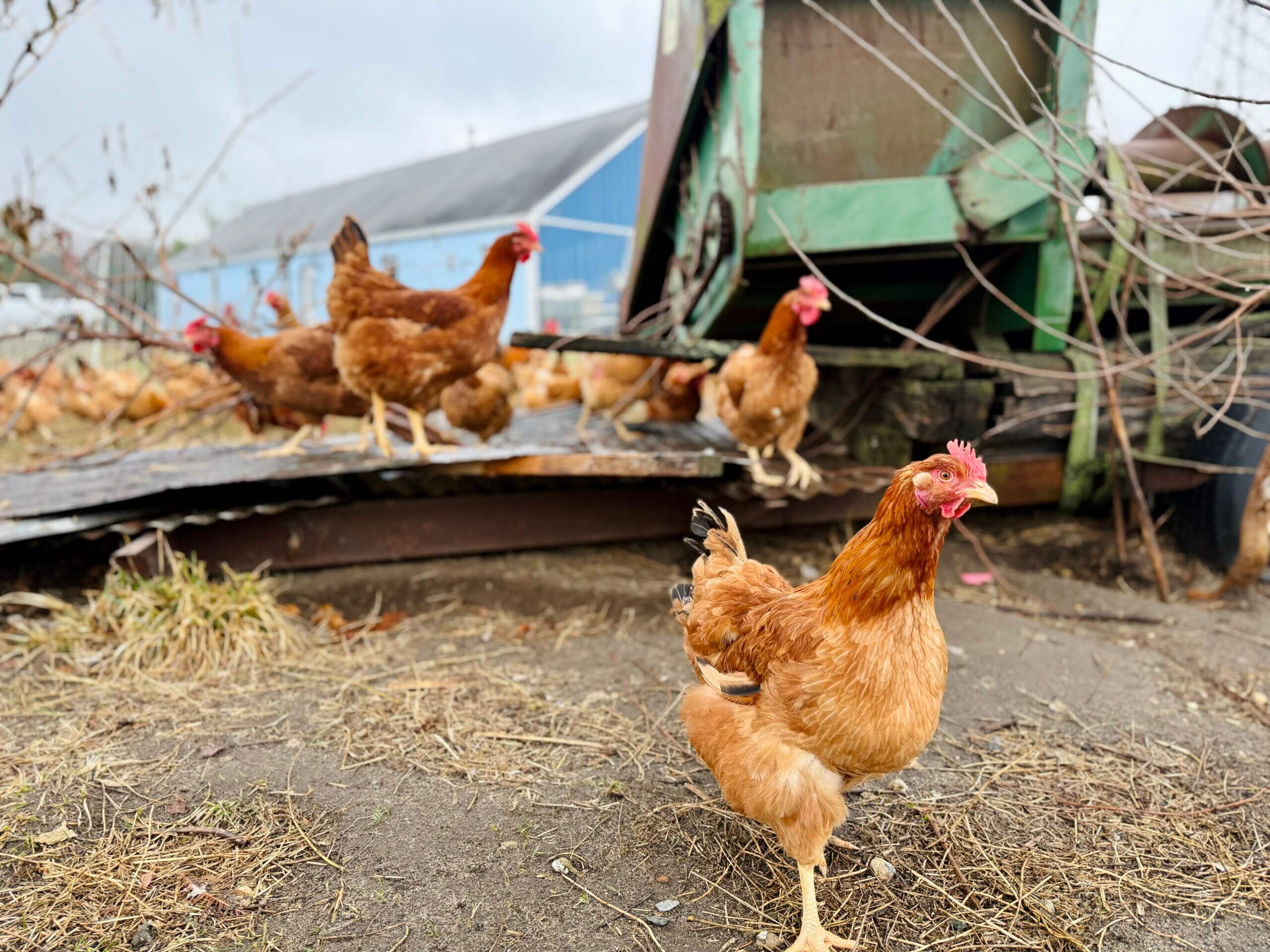Uncategorized
A fashion show in Tribeca attempts to capture ‘The Jewish Uniform’
(New York Jewish Week) – Hip-hop music blasted through loudspeakers as about a dozen models strutted up and down a makeshift runway. Some of them wore cream knit loungewear, while others were clad in modest but elegant dresses accessorized with silk scarves.
The models, many of them student volunteers from Chelsea’s Fashion Institute of Technology, were donning “The Jewish Uniform,” at least as defined by the minds of Havurah, a cohort of self-described “frum” (religiously observant) New York-based 20-somethings aspiring to create a “renaissance of Jewish art.” In addition to the fashion show, Havurah has hosted readings, Torah study and concerts, and the group recently launched “Verklempt!,” a Jewish literary magazine.
Last Thursday evening, “The Jewish Uniform” highlighted 13 Jewish designers whose levels of experience ranged from amateurs to well-established brands like Batsheva, whose signature modest dresses and ultra-feminine womenswear first made a big splash in 2016. Directed by Havurah co-founders Daniella Messer and Eitan Gutenmacher — both 20-year-old students at New York University — the show’s looks were curated by Ashley Finkel, a 26-year-old e-commerce coordinator at La Perla and styled and staged by Lily Paige Sausen, 26, who runs an online vintage store.
Havurah’s motive is to create Jewish art and to understand the intersection of art and Judaism. The fashion show, in particular, aimed to celebrate and explore what makes an outfit Jewish — at least through an observant lens.
Ashley Finkel, left, one of the show’s curators, speaks with designer Elke Reva Sudin, May 11, 2023. (Saul Sudin)
“The intention of the show was to use fashion as a medium to bring together a community of creatives in NYC,” Finkel told the New York Jewish Week. “We’re very happy with how the evening turned out.”
Around 120 people attended the show, which took place in the outdoor space underneath the bulbous curve of the architecturally unique Tribeca Synagogue (49 White St.), an Orthodox congregation. The downtown neighborhood is now known for its hip loft buildings, but it was once a center of the textile and cotton trade industries in the 19th and early 20th centuries.
The show’s creators, from left to right: Eitan Gutenmacher, Daniella Messer, Lily Paige Sausen, Ashley Finkel and Kayla Mantell, at the show on May 11, 2023. (Julia Gergely)
“I thought it was really cool to be able to show my looks in a Jewish show,” said Yarden Sopher-Harelick, a 24-year-old designer and FIT graduate who had three outfits in the show, including a blazer dress fashioned out of bubble wrap and a seatbelt.
Batsheva Hay, the Orthodox designer who runs the eponymous brand, donated four dresses to the show, though she wasn’t able to attend herself.
Each “Jewish Uniform” runway look had a tongue-in-cheek title and description that was presented in an accompanying program for the show, allowing the creative directors to build on their thesis about what makes an outfit Jewish — and to poke some lighthearted fun at Jewish customs as well. Take “The Yenta,” who wears a white blouse, pearls and a long black skirt: “She attends shul for one purpose: the tea. It’s piping hot, just like her outfit,” the program read.
The “Shabbat Snoozer” — a loose, comfortable, matching set in navy — was described as “the classic combination of a food coma and a few hours to spare before Havdalah,” while the “Cholov Yisroelnik,” described as “the kosher version of a milkmaid,” consisted of a headscarf, a pink gingham skirt and white top, with the model carrying a carton of milk instead of a clutch.
For first-time model Tara Dietzel, an 18-year-old first-year student at FIT, walking in the show and seeing clothes designed by Jewish designers was a way for her to envision how she might combine her Judaism, her love of modeling and her professional goal to become a fashion designer.
“It was so much fun and a good first step to figuring out how I can accomplish all of these dreams at once,” Dietzler told the New York Jewish Week after the show.
Tara Dietzler, left, models a design from Yarden Sopher-Harelick, right, May 11, 2023. (Julia Gergely)
Guests included many of the designers’ friends and family, who cheered enthusiastically as their models walked the runway. After the presentation, everyone came together over wine and seltzer. The designers posed with their looks and models walked through the crowd to show off their clothes’ texture and details up close.
At the event, Elke Reva Sudin, a Brooklyn-based designer and painter, launched “The Crown Collection,” a limited collection of silk head scarves. Nearly a decade ago, Sudin ran a similarly-missioned organization to Havurah called Jewish Art Now before founding Drawing Booth, a non-Jewish arts vendor where artists live-sketch guests at events. The scarves are her first foray into fashion.
Elke Reva Sudin, middle, stands with two models who donned her new line of headscarves, the Crown Collection, May 11, 2023. (Saul Sudin)
Sudin said that designing scarves — an item popular among Orthodox women, most of whom cover their hair after marriage, as per Jewish law — was a way for her to explore her own Jewish identity and spirituality as a married Orthodox Jewish woman. She found out about Havurah through a mutual artist friend.
“I’ve been out of the Jewish world for a while now and I appreciate that there was a Jewish space I could turn to launch my scarves, which are sort of my return to Jewish art while entering into the world of fashion,” Sudin, 35, told the New York Jewish Week. “Both my designs and Havurah have the same intent, which is to be inclusive and to create something not only beautiful, but meaningful to the Jewish community.”
—
The post A fashion show in Tribeca attempts to capture ‘The Jewish Uniform’ appeared first on Jewish Telegraphic Agency.
Uncategorized
Polish officials criticize Yad Vashem’s post on social media, days after US ambassador to Poland rejects Polish complicity as ‘grotesque falsehood’
(JTA) — The new U.S. ambassador to Poland, Thomas Rose, has ignited debate after delivering a speech in Warsaw calling the idea of Polish complicity a “grotesque falsehood” on par with antisemitic conspiracy theories.
Meanwhile, Polish government officials criticized a post by Israel’s Holocaust memorial about the Holocaust in Poland, in a sign of renewed pressure over public characterizations of Poland’s role in the Holocaust.
Speaking last week at the annual convention of the International Association of Jewish Lawyers and Jurists, Rose denounced what he said was “the slander that Poland somehow bears responsibility for the crimes committed by others.”
The idea of Polish complicity, which the Polish government rejects, had “poisoned relations between Jews and Poles, between Israel and Poland and between the United States and Poland for decades,” said Rose, the Jewish former publisher of the Jerusalem Post who was confirmed to the ambassadorship on Oct. 7.
“For decades, Poland has suffered a grave historic injustice, the persistent belief that Poland shares guilt for the barbaric crimes committed against it. It’s a grotesque falsehood and the equivalent of a blood libel against the Polish people and Polish nation,” he said, using a term that typically refers to an antisemitic lie that has spurred violence against Jews. “No nation fought longer or suffered more, which is why applying a debtor-creditor relationship between Poland and the world for a genocide perpetrated by others on its soil against its people is historically false, and I believe morally scandalous.”
Rose was repeating ideas that he had laid out during his confirmation hearing over the summer — which themselves marked a departure from the stance the State Department took during the first Trump administration.
In 2018, then-Secretary of State Rex Tillerson issued a rare rebuke of the Polish government’s decision to criminalize — and potentially punish with prison time — expressions of blame against Poland for crimes that the government maintained had been exclusively carried out by Germans.
The State Department did not respond to a request for comment about whether Rose’s speech in Warsaw reflects an official U.S. position.
While hundreds of Poles are recognized as “Righteous Among the Nations” for their roles in protecting Jews during the Holocaust, there is a wide consensus — including from Polish institutions in the past — that many other Poles participated in the mass slaughter that claimed 3 million Polish Jews, nearly 90% of those who had lived there before the war. Poles also killed Jews returning to their village after the war, in an incident seen as a symbol of Polish complicity.
Earlier this year, Polish voters elected a right-wing Holocaust revisionist historian as president. Karol Nowricki comes from the Law and Justice Party, which promotes historical narratives about Polish victimhood and resistance to the Nazis, while delegitimizing research on Polish antisemitism or Poles who killed Jews.
While the prime minister does not come from the Law and Justice Party, it holds a crucial role in governance in Poland, seen as a bulwark for U.S. interests in the region against Russia.
Rose said he hoped his speech leads to further discussion of how Poland has been maligned in Holocaust history. Sharing his speech on X, he wrote, “Yesterday evening, I began a conversation that—I hope—will contribute to correcting a very unfair historical narrative about Poland.”
On Sunday, a second dustup took place, as Yad Vashem, Israel’s Holocaust memorial and museum posted on X about the yellow stars that Polish Jews were forced to wear.
“Poland was the first country where Jews were forced to wear a distinctive badge in order to isolate them from the surrounding population,” Yad Vashem tweeted.
Radosław Sikorski, Poland’s minister of foreign affairs, responded with a request for a correction: “Please specify that it was ‚German-occupied’ Poland, @yadvashem,” he wrote.
Polish officials from across the ideological spectrum shared in the criticism. “Poland didn’t exist at that time, after it was raided by Germany and Russia. Its territory was partitioned and incorporated to the Third Reich and the USSR,” a left-wing lawmaker, Anna-Maria Żukowska, said in a tweet that tagged the Israeli embassy.
Both Yad Vashem and its chairman, Dani Dayan, Yad Vashem’s chairman, soon responded acknowledging the concerns. “Yad Vashem presents the historical realities of Nazism and WWII, including countries under German occupation, control or influence. Poland was indeed under German occupation,” Dayan wrote. “This is clearly reflected in our material. Any other interpretation misreads our commitment to accuracy.”
The post Polish officials criticize Yad Vashem’s post on social media, days after US ambassador to Poland rejects Polish complicity as ‘grotesque falsehood’ appeared first on The Forward.
Uncategorized
This Jewish family is betting the farm on Thanksgiving turkeys like bubbe cooked

NARVON, PA – A thick, rolling gobble fills the barn in Lancaster County, Pennsylvania as several hundred turkeys stand shoulder to shoulder, shifting in waves like a loud, feathered mob.
They don’t know it, but they’re part of a gamble — one that could reshape the kosher poultry business in America. The question is: Will enough people want a Thanksgiving turkey, at a price between $140 and $400, that tastes like bubbe’s did?
Supermarket poultry has become a fixture of the Jewish kitchen — easy to find, easy to cook, easy to forget. As organic and ethically raised meats gain traction across the country, many kosher families are still left with factory-farmed options that claim tradition but taste like compromise.
This flock belongs to Chosen Farms, a kosher heritage poultry startup run by Yadidya and Miriam Greenberg, a husband-and-wife team who split their work between two states: turkeys here in Lancaster County with help from an Amish farmer, and chickens on 30 acres in Pemberton, New Jersey.
Once the turkeys reach market weight, they begin a Thanksgiving relay — first to a kosher processor in upstate New York, then to Pemberton to be frozen and packed. Labels come off the printer like boarding passes, rattling out destinations: California. Colorado. Florida. Nevada. New York. Orders pile up like suitcases in an airport the day before the holiday.
These are heritage birds — the kind that existed before industrial farming redesigned poultry around speed and uniformity. They come from older bloodlines that could walk, flap their wings and develop muscle over time. Today’s supermarket birds are bred to grow fat fast, their skin stretched thin over rapidly expanding bodies. They arrive like something delivered by algorithm. Heritage birds arrive with history.

The turkeys live twice as long as their grocery store counterparts. They keep the genetics, and much of the flavor, of the past. If you want your chicken soup to taste like your bubbe’s version, you start with one of these.
As a teenager, Miriam volunteered on farms in Maryland and later trained as a classical chef in New York. She speaks about modern poultry with the bluntness of someone who has tasted too much of it. “They neutered all the flavors. It just tastes like mush,” she said.
Heritage birds, she insists, give you something more flavorful. “It’s like tasting butter after a lifetime of margarine.”
Heritage breeds and Hanukkah goose
Miriam isn’t the only one making the case for flavor. Gidon van Emden, CEO of Kol Foods, which specializes in kosher grass-fed beef, lamb and pasture-raised chicken, has seen growing curiosity about heritage breeds in the kosher market. Consumers tell him the difference is noticeable immediately.
Van Emden believes the kosher market is hungry — not just for cleaner food, but for food that feels intentional. “If you mistreat the animal — bad feed, bad genetics — it’ll taste more watery,” he said.
He and Yadidya go back years. Greenberg taught him how to be a shochet, a butcher. Now, Kol Foods and Chosen Farms are among the few companies trying to expand what kosher poultry can be.
Yadidya bought the Pemberton property in 2022, and soon after married Miriam. The pasture is in the same swath of South Jersey where Holocaust survivors resettled and rebuilt their lives running chicken farms.
These day, in the kitchen, Yadidya boxes frozen turkeys — lining cardboard with insulated wrap, dropping in ice packs and sealing each shipment with a strip of tape. Their sukkah from last month’s holiday still stands in the yard, a reminder that the Jewish calendar doesn’t always make room for farm schedules. Their two-year-old brown herding dog, Peanut Butter, zigzagged between the chickens, nipping at their heels.

Chosen Farms sold its first batch of kosher heritage turkeys last year. It was a modest 20 birds. This year, they tripled that to 60. There’s no marketing budget, no social media campaign. Orders came in online by word of mouth, passed between butchers, rabbis, chefs and families looking for something better than the standard frozen brick with a pop-up timer.
Not all of their orders are for November. Yadidya pried open a freezer and revealed rows of heritage geese. The traditional Ashkenazi “Hanukkah goose” was once a staple dish in Eastern Europe, especially for Jews who couldn’t afford beef. Its rendered fat, known as schmaltz, became the secret weapon for frying latkes.
“We’re one of the only places in the country raising and selling kosher geese,” Yadidya said. Goose requires specialized equipment to pluck, and at $30 a pound, it’s not exactly an impulse buy. But Greenberg said demand returns every winter, a culinary echo of an older Jewish kitchen.
Farm life, Jewish life
Living on a farm doesn’t mean leaving Jewish life behind. The Greenbergs chose Pemberton precisely because it keeps them connected. They’re 30 minutes from Cherry Hill and Lakewood, both home to large Orthodox communities and kosher restaurants. There’s a mikvah nearby, and a daily minyan within a 20-minute drive. “There are farmers who move two hours away from Jewish life and then struggle,” he said. “I didn’t want that life. We paid more to be close.”
Friends drive in to spend Shabbat with them. In the summer, Jewish camping groups pitch tents by the trees. “We’re far enough to have space,” Yadidya said, “but close enough to still feel part of something.”
Chosen Farms isn’t an anomaly. It’s part of a small but growing movement of Jews choosing to make their living in agriculture. The Jewish Farmers Network, which began in 2017, now counts 1,800 farmers across 46 states. Some run educational farms for school trips, but others simply farm. No workshops. No signage. Just soil, livestock and spreadsheets.
“When Jewish people enter agriculture, it often feels like they’re departing from Judaism,” said Shani Mink, the group’s co-founder and executive director. “But we try to show that it can actually be a deeper encounter with it — because at its core, Judaism is agrarian.”

The Greenbergs’ farm still feels young — part vision, part construction site. They’re hoping to add heritage ducks next year, starting with the Silver Appleyard breed, which currently has no kosher supplier. A small curbside farm stand is in the works, where they could sell eggs, meat and Miriam’s sourdough bread.
The Greenbergs, as is their tradition, are hosting Thanksgiving on the farm with visiting family and friends. The turkeys will be their own, of course. Peanut Butter will make his rounds.
In a few days, ovens will preheat. Football games will hum in the background. Parade balloons will float past Macy’s like oversized guests. And somewhere between the gobbling and the grace after meals, one Jewish farm will find out whether a taste from the past still belongs to the future.
The post This Jewish family is betting the farm on Thanksgiving turkeys like bubbe cooked appeared first on The Forward.
Uncategorized
US Hails Progress in Ukraine Peace Talks But Security Questions Unresolved

US Special Envoy Steve Witkoff, US Secretary of State Marco Rubio, US Army Secretary Daniel Driscoll and and other members of the US delegation, and Head of the Office of the President of Ukraine Andriy Yermak and other members of the Ukrainian delegation sit before closed-door talks on ending Russia’s war in Ukraine, at the US Mission in Geneva, Switzerland, November 23, 2025. Photo: REUTERS/Emma Farge
The United States said it had made significant progress on crafting a plan to end the war in Ukraine during talks on Sunday but no agreement was reached on how to guarantee Kyiv’s security amid concerns about the threat posed by Russia.
US Secretary of State Marco Rubio led the talks in Geneva with a high-level Ukrainian delegation after Kyiv and its allies voiced alarm about a US-backed plan because of what they saw as major concessions to Russia, and pressed for changes.
Rubio said work remained to be done on questions including the role of NATO and security guarantees for Ukraine, but that his team had narrowed down unresolved issues in a 28-point peace plan for Ukraine championed by President Donald Trump.
“And we have achieved that today in a very substantial way,” Rubio told reporters at the US mission in Geneva.
Earlier, Trump said Ukraine had not been grateful for American efforts over the war, prompting Ukrainian officials to stress their gratitude to the US president for his support.
European officials joined the US and Ukrainian delegations for talks late on Sunday after crafting a modified version of the US plan for Ukraine that pushes back on proposed limits to Kyiv’s armed forces and mooted territorial concessions.
The European plan proposes that Ukraine be granted a larger military than under the US plan and that talks on land swaps should start from the front line rather than a pre-determined view of which areas should be considered Russian.
On Friday, Trump said Ukrainian President Volodymyr Zelensky had until Thursday to approve the plan, which calls on Ukraine to cede territory, accept limits on its military and renounce ambitions to join NATO.
For many Ukrainians, including soldiers fighting on the front lines, such terms would amount to capitulation after nearly four years of fighting in Europe’s deadliest conflict since World War Two. On Saturday, Trump said the current proposal for ending the war is not his final offer.
Rubio said the United States still needed time to address the pending issues. He hoped a deal could be reached by Thursday but suggested that it could also take longer.
US and Ukrainian officials were discussing the possibility of Zelensky traveling to the United States, maybe as early as this week, to discuss the peace plan with Trump, two sources familiar with matter said on Sunday.
The main idea is that they would discuss the most sensitive issues in the peace plan, such as the matter of territory, one of the sources said. There is no confirmed date for now, the source added.
ORIGIN OF U.S. PLAN STIRS CONTROVERSY
The main talks between US and Ukrainian officials got under way in a stiff atmosphere at the US mission, soon after Trump complained in a Truth Social post that Ukraine’s leadership had shown “zero gratitude” to the US for its efforts and Europe continued to buy Russian oil.
Rubio interrupted the meeting to speak to reporters, saying the talks had been probably the best the US had held with Ukraine since Trump returned to power.
He said changes would be made to the plan to work towards a solution that both Ukraine and the US could support.
“Obviously this will ultimately have to be signed off with our presidents, although I feel very comfortable about that happening given the progress we’ve made,” said Rubio.
Andriy Yermak, head of the Ukrainian delegation, was at pains to thank Trump for his commitment to Kyiv during the brief interlude. Minutes later, Zelensky also thanked Trump.
Yermak did not reappear with Rubio when the talks ended.
Since the US plan was announced, there has been confusion about who was involved in drawing it up. European allies said they had not been consulted.
Before heading to Geneva, Rubio insisted on X that Washington had authored the plan after remarks from some US senators suggesting otherwise.
Senator Angus King said Rubio had told senators the plan was not the administration’s position, but “essentially the wish-list of the Russians.”
A PERILOUS MOMENT FOR UKRAINE
The draft US plan, which includes many of Russia’s key demands and offers only vague assurances to Ukraine of “robust security guarantees,” comes at a perilous moment for Kyiv.
Russia has been making gains on parts of the front, albeit slowly and, according to Western and Ukrainian officials, the advances have been extremely costly in terms of lives lost.
The transportation hub of Pokrovsk has been partially taken by Russian forces and Ukrainian commanders say they do not have enough soldiers to prevent small, persistent incursions.
Ukraine’s power and gas facilities have been pummeled by drone and missile attacks, meaning millions of people are without water, heating and power for hours each day.
Zelensky himself has been under pressure domestically after a major corruption scandal broke, ensnaring some of his ministers and people in his close entourage.
He has warned that Ukraine risked losing its dignity and freedom – or Washington’s backing – over the US plan.
Kyiv had taken heart in recent weeks after the United States tightened sanctions on Russia’s oil sector, the main source of funding for the war, while its own long-range drone and missile strikes have caused considerable damage to the industry.
But the draft peace plan appears to hand the diplomatic advantage back to Moscow. Ukraine relies heavily on US intelligence and weapons to sustain its war against Russia.


